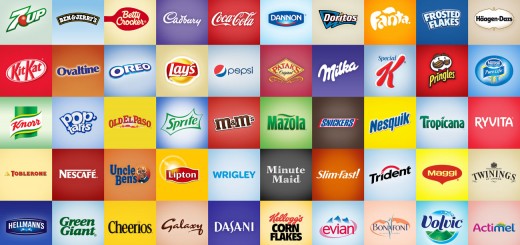Debunking the Myths Around Programmatic Video
Concerns over the placement of ads, whether or not they are actually seen by humans, plus a lack of quality ad formats, has stalled brands’ willingness to divest their brand advertising budgets away from TV and into online video, using programmatic media-buying. However, a recently published paper from Tremor Video goes on to note how these concerns are not only over-played, but increasingly held as untrue among advertisers.
Video-on-demand (VoD) is widely touted as the growth sector of programmatic ad spend in the coming months. However, it has yet to win over brand advertising budgets in great volume, despite the potential efficiencies gained from using data, plus the medium’s creative similarities to TV.
In order to debunk common widely held misunderstandings among advertisers responsible for channeling brand spend, Tremor Video has published a study addressing concerns on both the buy- and sell-side of the industry.
Caution from the buy-side
A recently published US research study from the IAB identified video as the growth medium among marketers, with 68% of the 300-plus respondents claiming they intend to increase their online video ad spend over the next 12 months.
This rate of growth outpaces forecasted growth of TV budgets, but programmatic media-buying has historically been seen as a means of purchasing cheap inventory primarily through the use of real-time bidding (RTB) – typically in open exchanges – where reports of concerns around transparency made mainstream brand advertisers wary to engage.
Caution on the sell-side
This has also been exacerbated by media owners’ eagerness to protect their inventory prices (by not opening their most valuable inventory to exchanges), but programmatic vendors have responded by offering both the buy- and sell-side of the industry increased assurances, transparency and control.
The Tremor Video paper, produced by sourcing insights from several senior sources in the digital advertising sector, has identified counterarguments to these historic attitudes that have thus far warded brand advertisers away from programmatic media-buying in great volume. The below five points delve into these issues further, and offer reasons why brand advertisers should begin to reappraise the medium.
1. Viewability concerns addressed through collaboration
Transparency, with reference to the question of whether an ad served on a screen has actually been viewed by a web user, has been one of the key issues of debate in digital advertising for the last 18-24 months.
Reports from technology vendors on the average ad viewability rates in the industry vary wildly; but most agree that under half of all online display ads served are not seen. For instance, last month Google announced that almost half, 46%, of video ads were never seen.
However, such issues are over-exaggerated widely by technology vendors with a vested interest in selling wares that ‘offer higher viewability rates’, according to sources consulted in the production of the paper.
It also goes on to highlight several programmatic advertising vendors providing the option not to charge advertisers unless their ads are deemed viewable by an independently verified auditor. Plus, it also notes how tier-one brands are beginning to task their media-buying agencies to work with hand-selected viewability providers, and then agreeing benchmarks for them to reach in terms of viewability.
2. Fraudsters increasingly coming under fire
Click fraud has also hit the headlines with several companies falling prey to the practice in high profile cases involving some of the world’s most iconic brands. The IAB last year published a report indicating the practice costs the industry as much as $11bn per year – number buzzwords that feed a trade press eager for dynamic headlines, according to the study.
The open nature of advertising exchanges has meant that programmatic media-buying has become synonymous with such malpractice, or at least widely recognised as more vulnerable to it.
However, while Tremor Video does acknowledge that programmatic advertising technologies carry an element of risk regarding fraud, it is no less vulnerable to it than other forms of online media-buying. Sources also go on to stipulate that companies operating in the space have been the most proactive in minimising such risks – more so than any other sector.
Tremor goes on to highlight the establishment of the IAB-led task force The Traffic of Good Intent (TOGI) in the US – a move that is set to be mirrored in the UK in the coming months – in a bid to to tackle ad fraud, it will be publishing anti-fraud good practice principles. Another example of moves to address the sector include measurement firm comScore launching its Industry Trust Initiative that lets advertisers measure the quality of the trading environment they operate within by assessing their likelihood to contain NHT.
3. Publishers loosening their grip on the quality inventory
The traditional association of programmatic media-buying with cut-price media offerings has been proliferated by vendors emphasising their ability to drive value from display inventory using RTB.
This ‘race to the bottom’ meant tier-one publishers have seen using such technologies as threatening to their business models – an attitude that they equally applied to their approach to monetising video inventory. Hence the ‘chicken-egg’ scenario has played out.
However, sources note that with video, there is more of an equilibrium around the balance of supply and demand; i.e. with display, there is an oversupply of inventory and new ad space can easily be created. Although with video this is less so, as media owners have been more cautious about monetising such formats.
Sources also note how advertisers are increasingly vocal about their willingness to pay more money for ad space, as long as they have the required guarantees over transparency. Add to this the increasing alternatives to employing RTB – such as programmatic-direct, etc – that are at the disposal of publishers, and the incentives for publishers to open-up their highly-prized inventory begin to stack up, according to sources.
4. Shifting perceptions from a DR mindset
The report goes on to note how the ‘cut-price legacy’ of programmatic advertising comes from it being employed by direct-response (DR) advertisers that operate on a performance basis.
This has meant that advertising techniques employed by such providers have included crude forms of engaging with online audiences; such as retargeting with messaging in a manner that doesn’t resonate with brand marketers, according to Tremor.
This has been driven predominantly by the use of last-click attribution, where third-party programmatic advertisers have been incentivised to bombard web users with messaging for products they may have already seen, and decided not to buy. The negative effects of this are potentially devastating for a brand; even the most ardent of advocates of retargeting will concede this.
The maturation of the space means advertisers do not have to employ programmatic advertising technologies in such a crude manner. For instance, the increasing use of data management platforms (DMPs) makes it possible to deliver more sequential media plans that can ‘escort’ a consumer through a purchase-consideration journey in a more appropriate manner.
The report goes on to highlight that another fallout of the legacy of programmatic advertising’s past association with DR campaigns is a widespread perception that it equates to a lack of creativity.
Quite simply, ad formats common in programmatic are disliked or ignored by the audiences that brand marketers want to engage with emotionally. However, Tremor goes on to note a recent case study presented by Google demonstrating how fashion brand Tory Burch was able to fuse its first-party data with its creative ad formats – bought in real-time – with premium publisher sites from Condé Nast, Hearst and Time Inc.
The post Debunking the Myths Around Programmatic Video appeared first on ExchangeWire.com.



